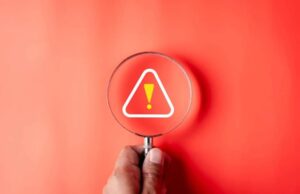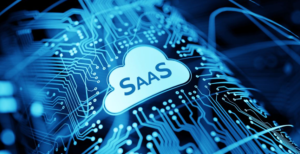IoT-based smart farming based on machine learning techniques

IoT- based Smart Farming Based On Machine Learning Techniques
Abstract
Farming is an occupation that is important for the survival of this world. It meets the greatest number of human needs in this world. An efficient prediction technique is based on a master learning method is used in IoT-based intelligent agriculture to predict crop efficiency and crop loss. Crop efficiency and climate forecasts are critical for farmers and agricultural leaders all over the world, who are assisting farmers to a large extent. Drought prediction is important for early warning of droughts, minimizing their effects on crop productivity, and conducting research into drought prevention to improve our understanding. Drought prediction is important for early warning of drought, minimizing its effects on crop productivity, and research into drought prevention to improve our understanding and predictability by fully accounting for the physical explanation of drought. Drought is essential to warn of droughts at an early stage and to limit their effect on crop efficiency. Classified drought research aims at improving specificity through the maximization of sources of predictability. A machine learning model based on a wrapper preference approach and part classification technique to ensure crop productivity and drover prediction. For the prediction of the suggested technique, data sets are used. The results show that the algorithm proposed for the comparison of crop productivity and drought is appropriate, accurate and precise. In order to assess and predict crop productivity and drought, the proposed method is more robust, precise and precise than existing techniques, based on the results. The proposed model developed the most precise crop drought forecast. The current technique also gives accurate, sensitive, and f-score measurements for existing algorithms.
Introduction
Agriculture is classified as one of the world’s and a country’s key strengths. Farming is one of the largest businesses in the world, and a wide array of crops are the main product. The agricultural sector has recently been confronted with problems that could threaten its future, for instance, drought, agricultural production, grain quality prediction. The Agriculture Organization of The United estimates that the world’s population will increase by approximately three per second or 250,000 by day, and by 2025, the world’s population will reach 8 billion, with the planet’s population expected to reach 9.6 billion by 2050. The world population is estimated to increase by 8 billion by 2025 or 9,6 billion by 2050, as indicated by the United Nations Food and Agriculture Organization, at a rate of around 3 persons per second, 250.000 people per day. Farmers need to increase food output whereas environmental conservation and natural resources need to be wisely used to maintain this constant increase, but they do so alone, and traditional methods of agriculture do not allow them to do so. This means that the world’s growing food needs are met with modern innovations and developments. The collection and use of data to inform agriculture undergo significant transformations. In the collection including the use of information to inform useful farmer decisions, agriculture undergoes a major transformation. Smart farming is the application of communication and information technology as infrastructure systems, advanced technology for food production in clean and regenerative ways, such as machine learning algorithms, and the rationalization of the use of natural resources. The significant share of the world’s people in a number of applications is supported by new technologies. IoT and technology of data analysis, including such big data and information science, are currently playing an important role in daily life. The internet of things IoT most use traditional techniques without assessing the performance of the model, and some of these skip data preparation at the beginning. In a range of fields, IoT solutions include medical, protection, intelligent homes, agricultural production, retail, cities of interest. The Internet of Things provides a science area where the increased energy of dispensing and communication skills stimulate many “things” and devices such as sensors and frequent tools. Agriculture is India’s greatest fundamental and important occupation, as it offers food requirements and essential raw materials for many industries. Development of innovative agricultural technology. Gradually, the introduction of advanced agricultural techniques increases the crop yield and makes it even more sustainable, and reduces irrigation waste. The model proposed is a precision agriculture system, with a machine learning algorithm that predicts crop water needs. In any field, moisture, temperature, and humidity are the three most important variables for determining the amount of water required. This system made up of temperature measurement, humidity, and moisture, transmits data via a processor, contributing to the emergence of an IoT device with digital infrastructure. It is now becoming an important part of daily life and extending its reach, as well as data analytics and large data processing techniques. Currently, the Internet of Things (IoT) and techniques of data analysis like Big Data Processing and Data Mathematics play a significant role in daily life and expand their ability to adjust to the environment. The Internet of Things (IoT) can operate as individual separate units or as a collaborating swarm of heterogeneous devices. It is a rapidly evolving technology in terms of accurate communication and information media, as well as the internet. Nowadays, IoT has spread to various areas, taken various forms, and has a wide range of applications. Internet of things and machine learning together have a great impact on each domain. The agriculture domain is not an exception it as it helps in the transformation of old-fashioned farming practice to smart farming. As we all know, the global population is increasing very fast and will be about 9.8 billion by2050, and there is a drastic fluctuation in the weather around the world due to global warming. In order to feed this massive population in this harsh environmental condition, food productivity must be increased. So, there is a need to adopt smart farming in the agricultural industry. In this chapter, initially, we introduce the IoT architecture and the various protocols used to perform the data exchange between connected devices. Then we discuss what ML is and its various categories. Various challenges farmers face with the traditional method of farming and how smart farming powered by IoT and ML will improve the agriculture operations from the sowing of seeds to till harvesting of the crop.
The Internet of Things (IoT) is a state-of-the-art device monitoring and control technology worldwide. It can connect devices to living objects. In many fields, the Internet of Things plays an important role. Today, an ordinary user can make use of the adaptive nature of IoT. Several methods and tools IoT have developed have made the life of men as smart education, towns, healthcare, and automation comfortable and easier. These techniques should be applied, in addition to human comfort, to basic needs, such as food, that can be obtained from agriculture. The World Bank has estimated that, if population trends are at the current rate, more than 50 percent of food needs to be produced before 2050. But the climate changes currently taking place would not support the massive production of these crops. Field sensors, missiles, advanced farm equipment, and hydroponics can thus assist encourage farmers to produce more crops at very low prices. This can help. The need for elegant cultivation is therefore exponentially increasing. For agriculture, there is an enormous amount of water extraction. In the farming area, there should therefore be more precautions and discussions. Indeed, the profitability of agriculture is an important part of the scheme. India is a nation famous for its farming. The need for its water system should be noted in accordance with the increasing yields. In order to be able to grow properly, harvests require a legitimate irrigation system. Agriculture is the field in which demand for work is high. The cause was quite low because young people were not passionate about the agricultural sector and didn’t find many opportunities. Farmers who spend their time developing crops in huge areas then need to spend a whole day out to ensure harvests are properly developed. Farmers sometimes had great crop regulations and also experienced unbelievable results. Once in a time, farmers had strong crop control and also had impressive misfortunes due to various and difficult weather conditions.
Smart Farming
Smart farming describes the application to the agriculture of modern ICTs which leads to what can be referred to as a Third Green Revolution. This Third Industrial Revolution is carrying over the farming world following the breeding of plants and genetic revolutions, which are driven by the combination of ICT solutions like precision equipment, the Internet of Things, sensors and drives, geo-positioning systems, large-scale information, unmanned air vehicles (UAVs, drones), robotics, etc. Smart farming has big potential, based on a more precise and resource-efficient approach, for producing more productive, sustainable agricultural production. While up to 80 percent of farmers in the United States probably use some kind of SFT, this is only up to 24 percent in Europe. From the point of view of agriculturists, smart farming should provide farmers with added value by making better decisions or by making operations and management more efficient. Intelligent agriculture has become more common among farmers, and the use of agricultural drones and sensors is quickly becoming the standard. Below are IoT applications in agriculture and how the Internet of Things Agriculture will help farmers meet world food demands over the next few years. Smart agriculture and farming techniques take off, but can only be the predictors to even greater technological use in the world of farming.
Smart farming is a concept that quickly creeps up in farming. There are clearly many advantages a networked farm has to offer with high precision crop control, useful data collection, and automatic farming techniques. Intelligent agriculture is a concept that quickly catches up in farming. There are certainly many benefits a networked farm can offer with high-precision crop control, useful data collection, and automatic farming techniques. IoT sensors that provide farmers with agricultural production, rainfall, pests, and soil nutritional facts are of priceless importance in production and provide accurate data that can be used to improve agricultural techniques. IoT sensors that provide farmers with data on crop yields, precipitation, the infestation of pesticides, and soil nutrition are valuable for production and provide accurate data that can also be used over time for improved agricultural technology. The combination of data-collecting technology with robotics is a step forward in new hardware, such as the corn-treating Rowboat, for making grain covers, applying and collecting data to optimize yields, and minimize waste.
Result and Conclusion
The purpose of this work was to analyze the effect of various agricultural machine training techniques. In the past few articles with machine learning have been published in IoT. This research expanded the knowledge of IoT in agriculture about machine learning methods. Agriculture is the major occupation in India, with large quantities of water consumed by these fields. Used only for agriculture is more than 80% of water resources. This steady trend could have a complete decline in water resources. In light of this, a model to limit the use of water has been proposed. Smart technology in agricultural practices is required to improve land productivity. The use of smart technology in agricultural practices should be focused on improving land productivity. The system has been configured to be trained and use the sensed soil humidity, temperature, and humidity sensors from the given data set. Using an algorithm of machine-learning from a machine-learning algorithm, your processes in real-time can generate a yes/no output and make the decision to the farmer. This decision allows a farmer to decide to only water the crop when necessary, to prevent water wastage.









